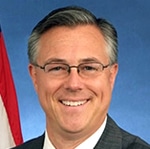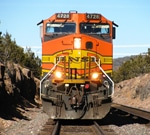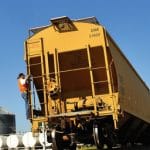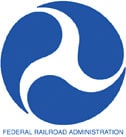Following almost 1,000 complaints from rail workers that they were improperly disciplined for reporting injuries or unsafe working conditions, the Federal Railroad Administration and the Occupational Safety and Health Administration have forged an alliance to bring more pressure on railroads to stop the pattern of harassment and intimidation.
“The safety of railroad employees depends on workers’ ability to report injuries, incidents and hazards without fear of retaliation,” said OSHA.
Between 2007 and 2012, OSHA received more than 900 whistleblower complaints under the Federal Rail Safety Act, and almost 63 percent involved an allegation that a worker was retaliated against for reporting an on-the-job injury.
The Federal Rail Safety Act of 1970 extended whistleblower protection to employees retaliated against for reporting an injury or illness requiring medical attention. The Rail Safety Improvement Act of 2008 added additional requirements ensuring injured workers receive prompt medical attention. An employer is outright prohibited from disciplining an employee for requesting medical or first-aid treatment, or for following a physician’s orders, a physician’s treatment plan, or medical advice.
Retaliation, including threats of retaliation, is defined as firing or laying off, blacklisting, demoting, denying overtime or promotion, disciplining, denying benefits, failing to rehire, intimidation, reassignment affecting promotion prospects, or reducing pay or hours.
Under the coordination agreement, the FRA will refer railroad employees who complain of alleged retaliation to OSHA. OSHA will provide the FRA with copies of the complaints it receives under the Federal Rail Safety Act’s whistleblower provision, as well as any findings and preliminary orders that OSHA issues. The agencies will jointly develop training to assist FRA enforcement staff in recognizing complaints of retaliation, and to assist OSHA enforcement staff in recognizing potential violations of railroad safety regulations revealed during whistleblower investigations.
“This memorandum is a watershed moment for both railroads and labor alike,” said FRA Administrator Joe Szabo. “Securing a process that protects employees who report safety violations is critical to maintaining safety standards in the workplace.”
In recent months OSHA has ordered railroads to pay millions of dollars in sanctions for violating federal whistleblower protections. “Firing workers for reporting an injury is not only illegal, it also endangers all workers,” OSHA said. In imposing sanctions against Norfolk Southern in 2011, OSHA said the railroad’s culture of employee harassment and intimidation permitted the railroad to “maintain the appearance of an exemplary safety record.”
UTU designated legal counsel have pledged to investigate and assist UTU members in bringing complaints under these laws.
A rail employee may file a whistle-blower complaint directly with OSHA, or may contact a UTU designated legal counsel, general chairperson or state legislative director for assistance.
A listing of UTU designated legal counsel is available at:
https://www.smart-union.org/td/designated-legal-counsel/
or may be obtained from local or general committee officers or state legislative directors.
To view a more detailed OSHA fact sheet, click on the following link:
www.osha.gov/Publications/OSHA-factsheet-whistleblower-railroad.pdf
 By Joe Szabo –
By Joe Szabo –  It’s confidential and no-fault.
It’s confidential and no-fault.
 WASHINGTON – Responding to petitions for reconsideration to its Nov. 9, 2011, final rule on conductor certification, the FRA has delayed for six months the testing implementation dates and clarified other mandates affecting territorial qualifications and the definition of hostlers.
WASHINGTON – Responding to petitions for reconsideration to its Nov. 9, 2011, final rule on conductor certification, the FRA has delayed for six months the testing implementation dates and clarified other mandates affecting territorial qualifications and the definition of hostlers. WASHINGTON – New minimum training and qualification standards are being proposed by the Federal Railroad Administration for rail workers in safety sensitive positions.
WASHINGTON – New minimum training and qualification standards are being proposed by the Federal Railroad Administration for rail workers in safety sensitive positions.